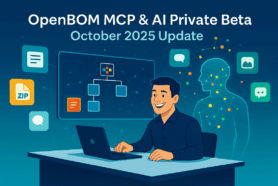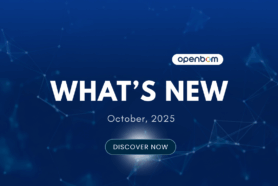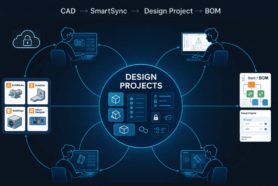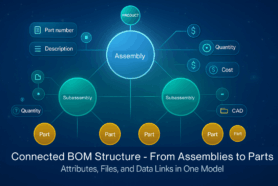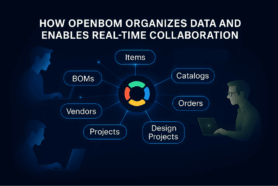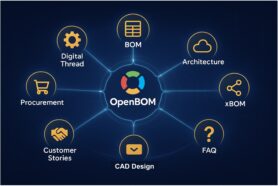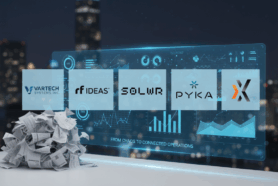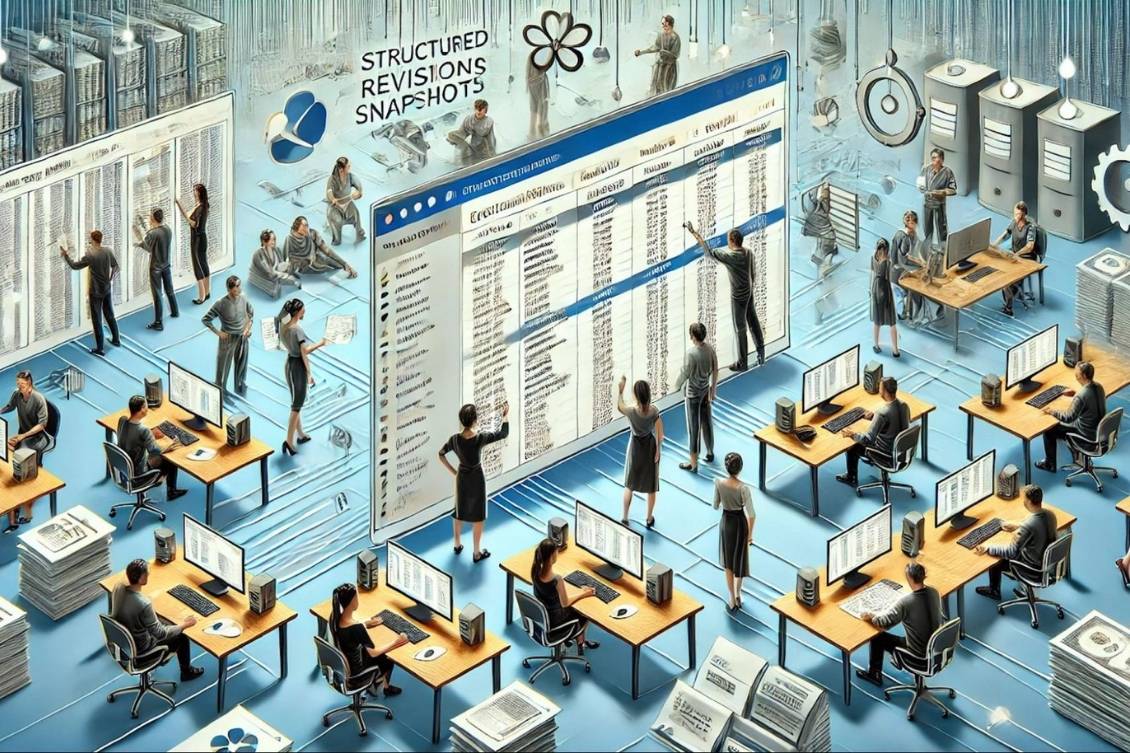
In this series of articles, we will explore OpenBOM’s Collaborative Workspace technology and its innovative approach to managing changes and revision control. We will examine how OpenBOM’s approach differs from traditional PDM/PLM revision control and the unique advantages it offers to customers. Unlike legacy systems that rely on rigid revisioning workflows, OpenBOM’s dynamic and flexible architecture enables real-time collaboration while ensuring data integrity and traceability.
OpenBOM Data Objects and Collaborative Editing
The foundation of OpenBOM is its data objects, which provide a powerful data modeling mechanism to support various data types, including items, design items, bills of materials (BOMs), orders, and requirements. Each data object has a structured template and contains properties—essentially a virtual spreadsheet on steroids.
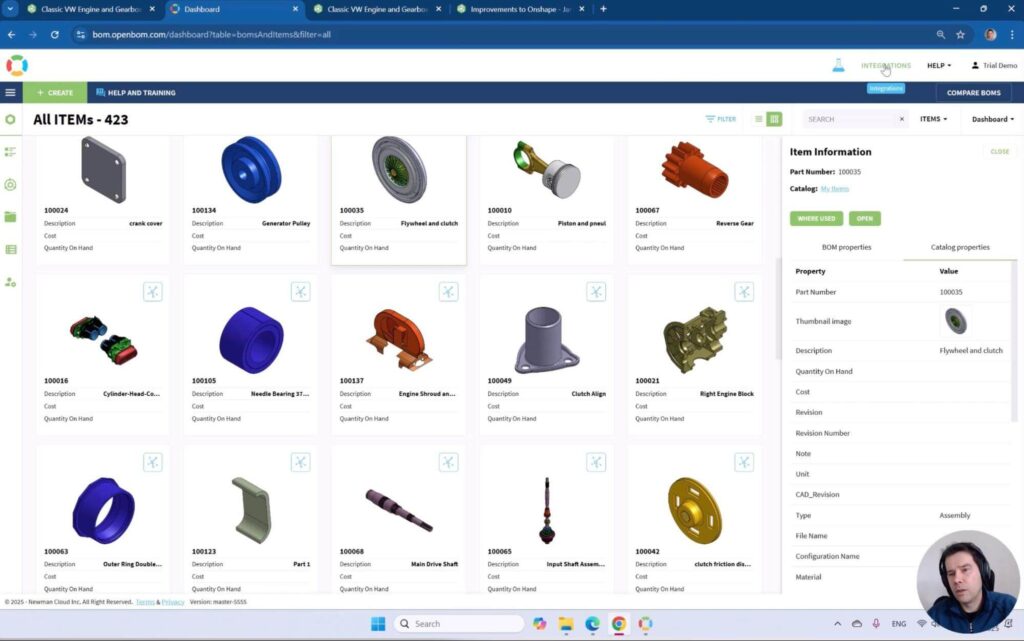
A fundamental aspect of OpenBOM’s collaborative editing mechanism allows multiple users to edit data simultaneously, much like Google Sheets. However, unlike Google Sheets, OpenBOM’s data is stored in a complex graph-based data structure that maintains relationships between different data objects. This allows users to share BOMs and other data types seamlessly while preserving real-time collaboration. OpenBOM’s dynamic data model also allows users to modify structures and attributes on the fly, enhancing adaptability in ever-changing engineering and manufacturing environments.
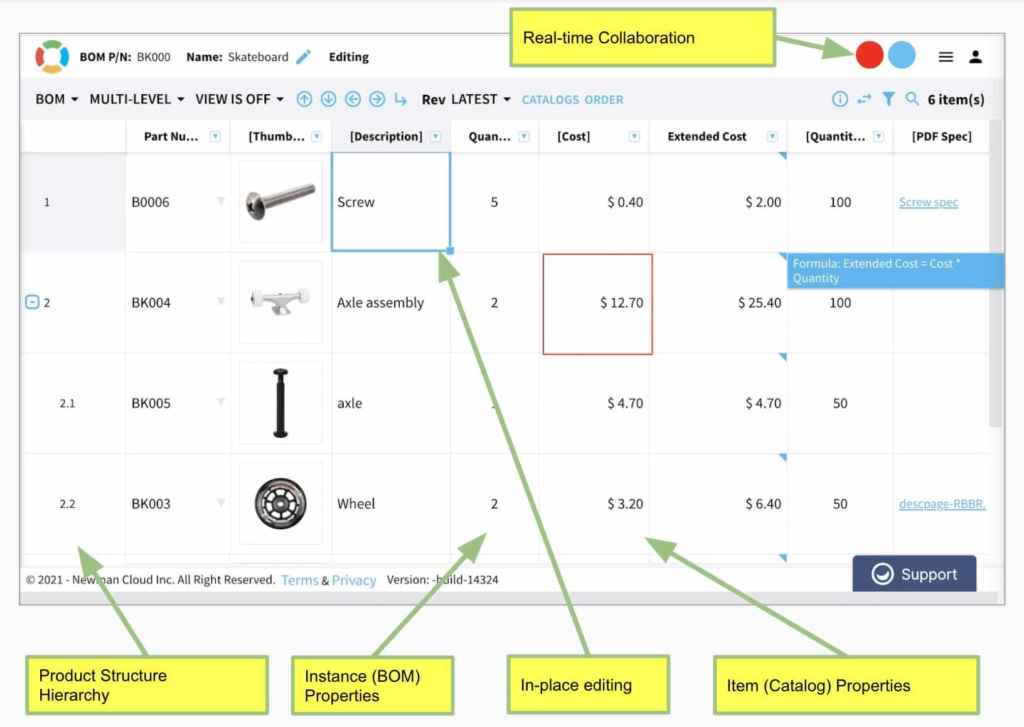
Baselines (or Revision Snapshots)
Each OpenBOM data object supports a revision function, enabling users to create snapshots of their data at different stages. For instance, users can create revisions of items along with corresponding revisions of BOMs (product structures). OpenBOM handles multi-level BOM structures uniquely—each level is saved independently and can have a distinct list of revisions, providing granular control over product changes.

This approach ensures that organizations maintain a clear and traceable history of product evolution while supporting complex hierarchical structures. At the same time, recombination of revisions allows to achieve any data structure – from latest and historical changes.
Re-thinking the Revisioning Process
Traditional PDM/PLM revision control follows a linear workflow:
- Check-out an object for editing.
- Modify the object.
- Check-in the object for approval.
- Repeat the process as needed.
This method effectively creates and edits a revision that later gets approved before being shared with others. While this approach has been effective for decades, it creates bottlenecks and limitations in modern, collaborative environments.
OpenBOM flips this paradigm by introducing a continuous workspace where changes can be made in real-time by multiple users. Instead of locking an object during editing, OpenBOM provides a shared workspace where modifications are seamlessly stored within OpenBOM’s Product Knowledge Graph—a unique combination of graph and NoSQL databases. Once a revision process is invoked, a snapshot of the record (e.g., an Item or BOM) is taken, making it immutable. This approach ensures that teams can iterate faster without sacrificing traceability or data integrity.
Watch the video of how it works in a real example.
Conclusion
Understanding the fundamental differences between OpenBOM and traditional systems is crucial. OpenBOM enables multiple users to collaborate on data in real-time and then save a revision when needed. This revisioning process can be repeated across multiple structures, linking revisions together to manage hierarchical structures and xBOMs effectively. By leveraging OpenBOM’s graph-based data model, companies can achieve unparalleled flexibility, scalability, and collaboration in their engineering and manufacturing workflows.
Stay tuned for the next part of this series, where we will dive deeper into OpenBOM’s revision control mechanisms and advanced data management capabilities.
REGISTER FOR FREE and check how OpenBOM can help you.
Best, Oleg
Join our newsletter to receive a weekly portion of news, articles, and tips about OpenBOM and our community.


